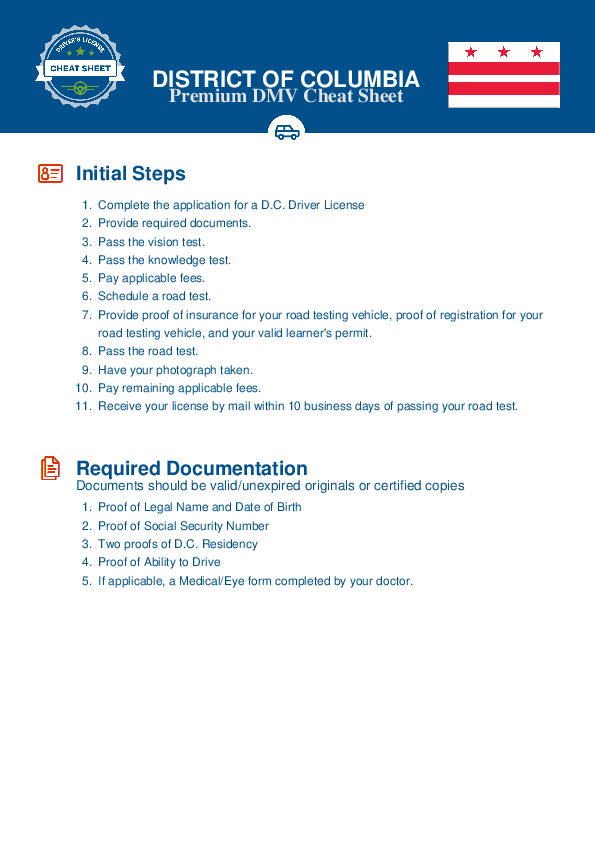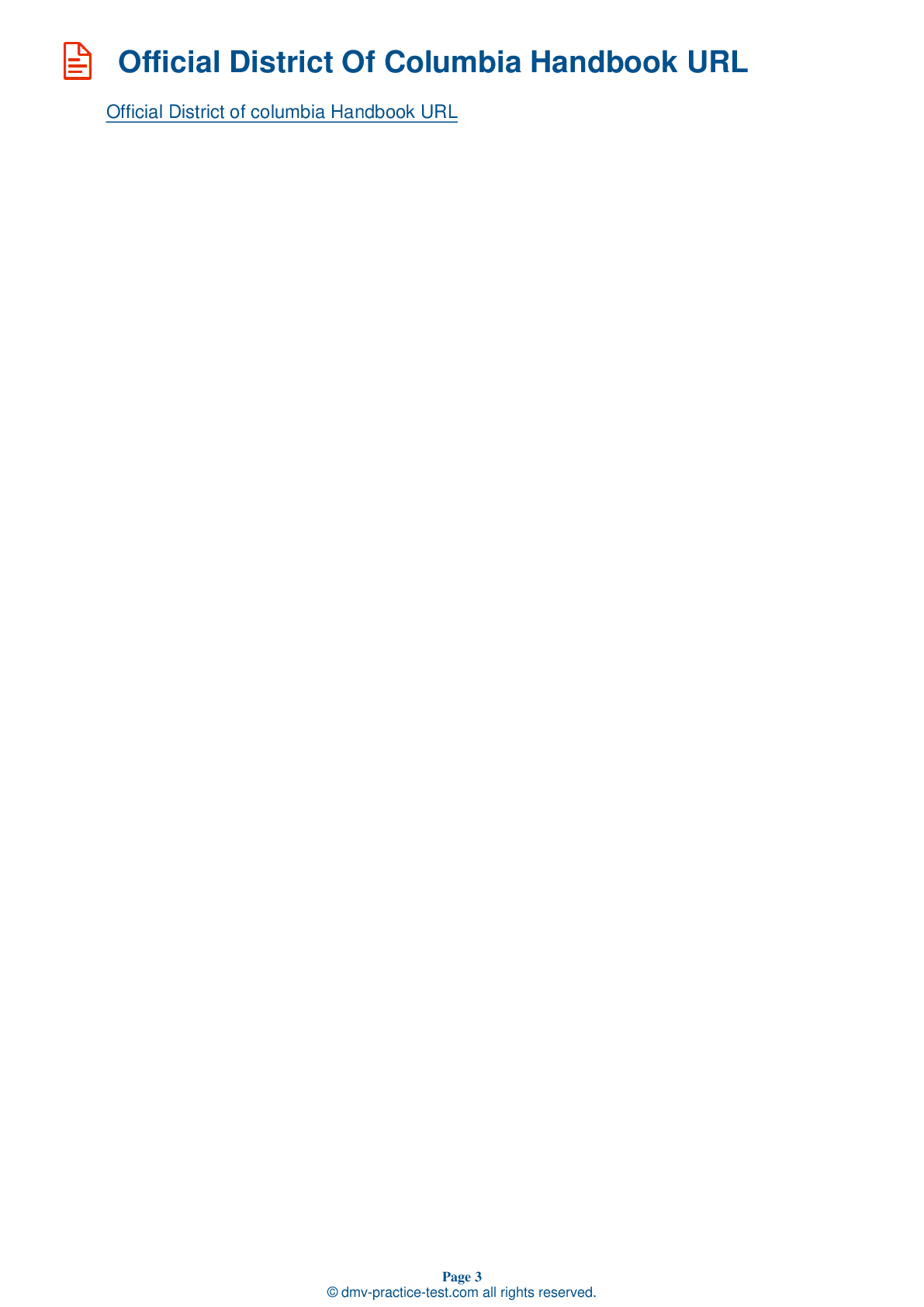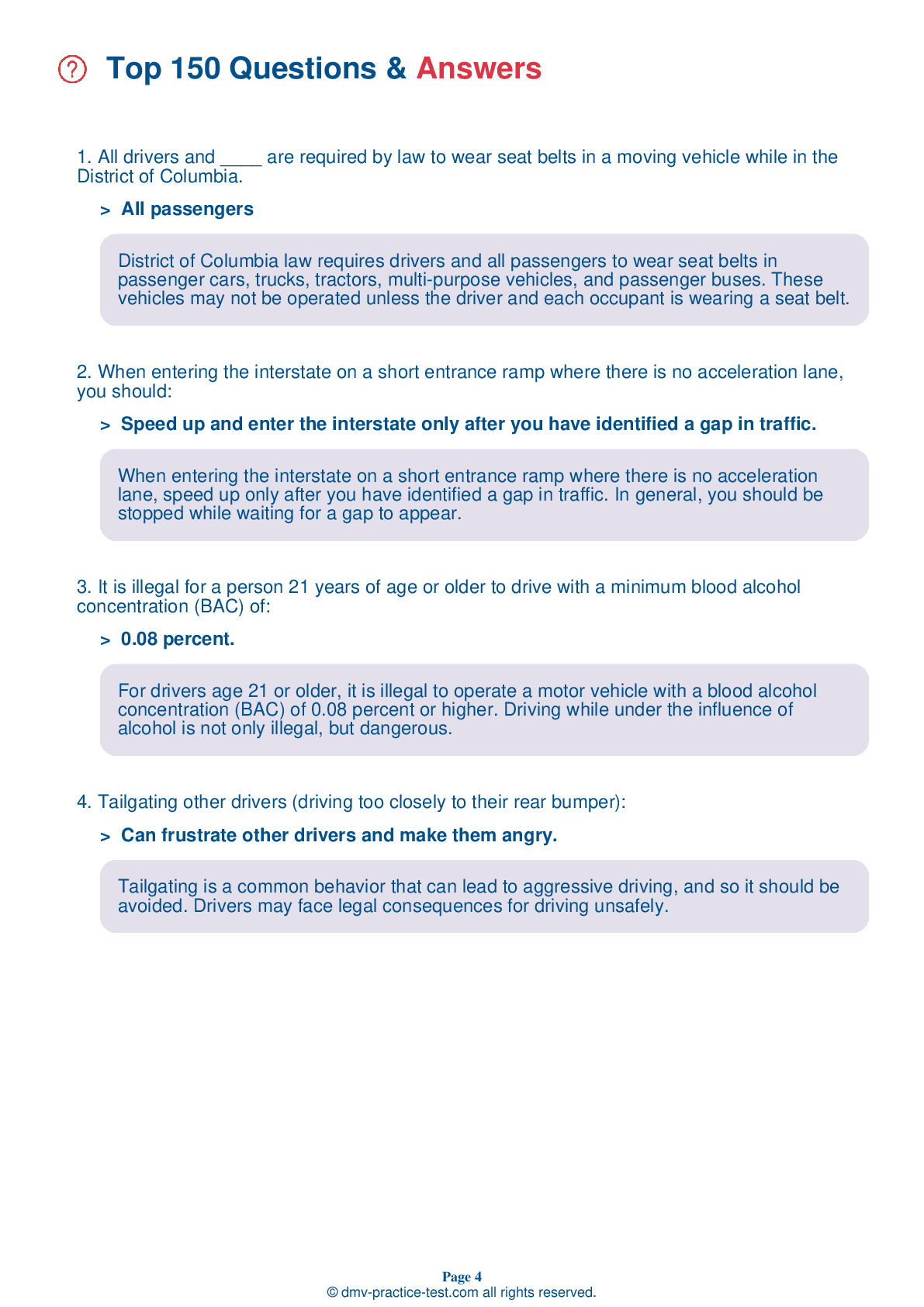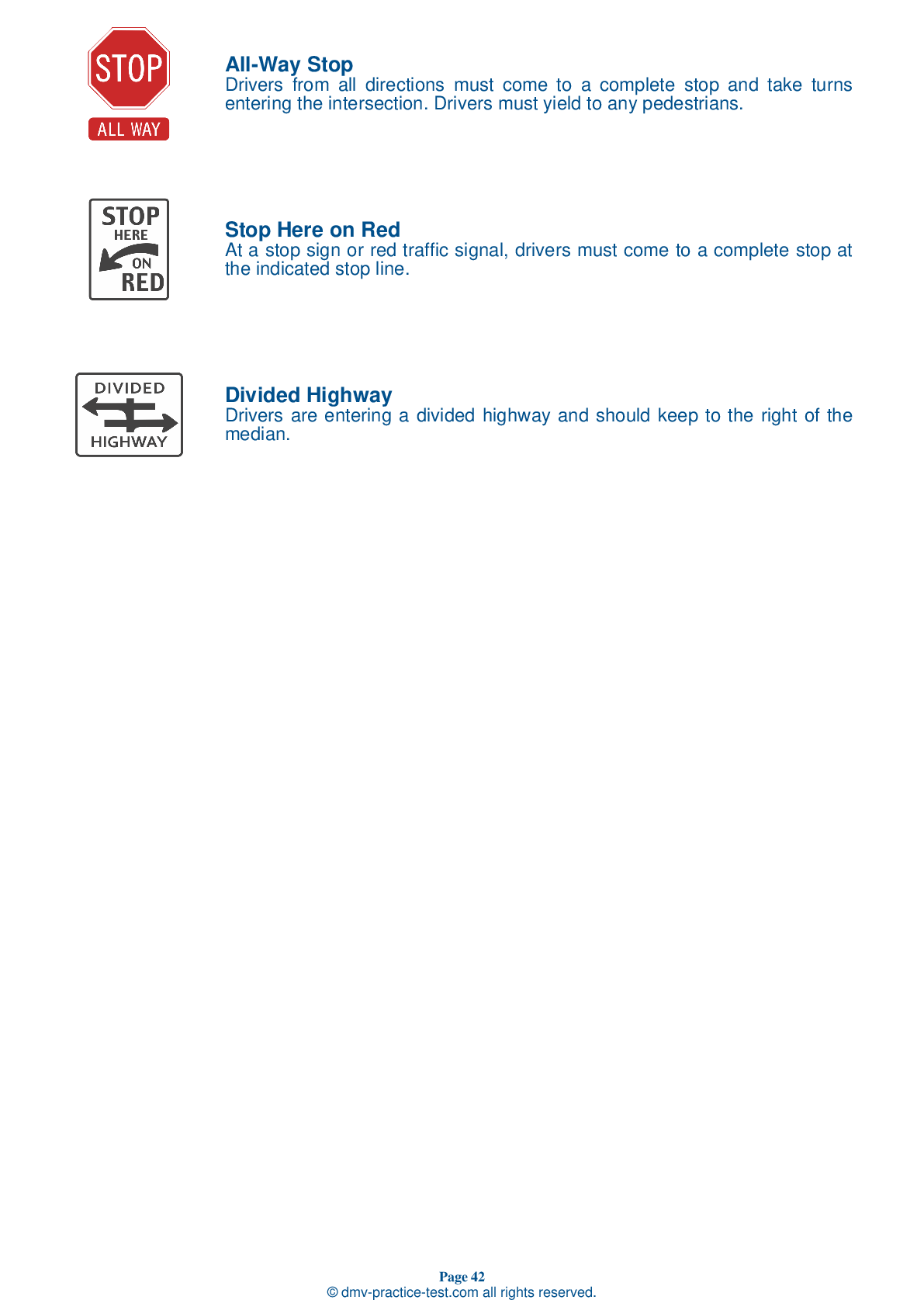FREE District Of Columbia DMV Practice Test #18 Page 3 of 3
This set of District Of Columbia DMV practise tests was been updated for January 2025. It includes questions based on the District Of Columbia Driver Handbook's most significant traffic signs and laws for 2025. Use actual questions that are very similar (often identical!) to the DMV driving permit test and driver's licence exam to study for the DMV driving permit test and driver's licence exam.
On the practise exam, each question gets a tip and explanation to help you remember the concepts. The written component of the official DMV test will include questions about traffic rules, traffic signs, and driving statutes, as well as information from the Driver Handbook.
To achieve the required passing grade, you must correctly answer 20 of the 25 questions. Take our DMV practise exam to help you prepare for your District Of Columbia instruction permit or driver's licence.
The DMV exam is available in several languages.
Using any form of testing help will result in an automatic fail, and the DMV may take further action against your driver's licence, so avoid it.
17 . This sign means:
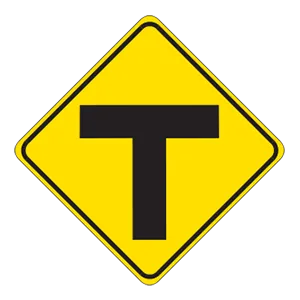
Warning signs prepare drivers for upcoming road conditions and hazards and are usually yellow with black markings. This sign warns drivers that they are approaching a T intersection and should prepare to turn either right or left.
18 . It is unlawful for a car to try to share a lane with a motorcycle.
Motorcycle operators have the right to use a complete traffic lane. Two motorcyclists may share a lane, but a car should never try to share a lane with a motorcycle.
19 . When parking your vehicle on any hill:
When parking on a hill, you should always leave your vehicle in gear or in the "park" position. If there is no curb, you should turn your front wheels so that the vehicle will roll away from the center of the road if the brakes fail. If there is a curb, the front wheels should be turned toward it (if headed downhill) or away from and gently touching it (if headed uphill).
20 . If you reach an intersection where you wish to turn but you are not in the proper lane, you should:
Never make last-minute turns. If you reach an intersection where you wish to turn but you are not in the proper lane to make the turn, drive to the next intersection and then make the turn from the proper lane.
21 . When entering the interstate on a short entrance ramp where there is no acceleration lane, you should:
When entering the interstate on a short entrance ramp where there is no acceleration lane, speed up only after you have identified a gap in traffic. In general, you should be stopped while waiting for a gap to appear.
22 . When a school bus is picking up or dropping off children, you must:
When approaching a school bus that is picking up or dropping off passengers, you must come to a complete stop before reaching the bus, regardless of your direction of travel.
23 . Which of the following about winter driving is not true?
You should not use cruise control on snow, in rain, in fog, or under similar hazardous conditions. Winter is the most difficult driving season and requires extra caution from drivers. It is important to consistently check your antifreeze and windshield washer fluid levels. Using snow tires can increase a vehicle's traction on the surface of slippery roads.
24 . At a school crossing sign, you should:
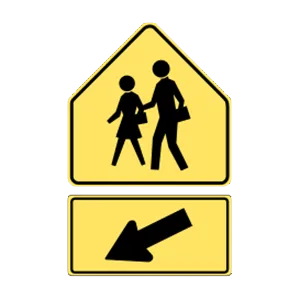
You must always yield to pedestrians who are in or about to enter a crosswalk. Be alert to pedestrians when driving across intersections or turning.
25 . The best way to avoid loss of control under wet conditions is to increase your vehicle's speed.
As you drive on a wet road, your tires may start to ride up on the surface of water, causing you to lose control of your vehicle. This is called hydroplaning. The best way to avoid hydroplaning is to lower your speed when driving under wet conditions.
See the exact questions that will be on the 2025 District Of Columbia DMV exam.
99.2% of people who use the cheat sheet pass the FIRST TIME
LT gives us an insight on how the cheat sheet provided her with all the study questions she needed before taking her test.
Joe initially studied with the handbook and failed his test, he eventually found us online, studied and pass his test the first time around.
